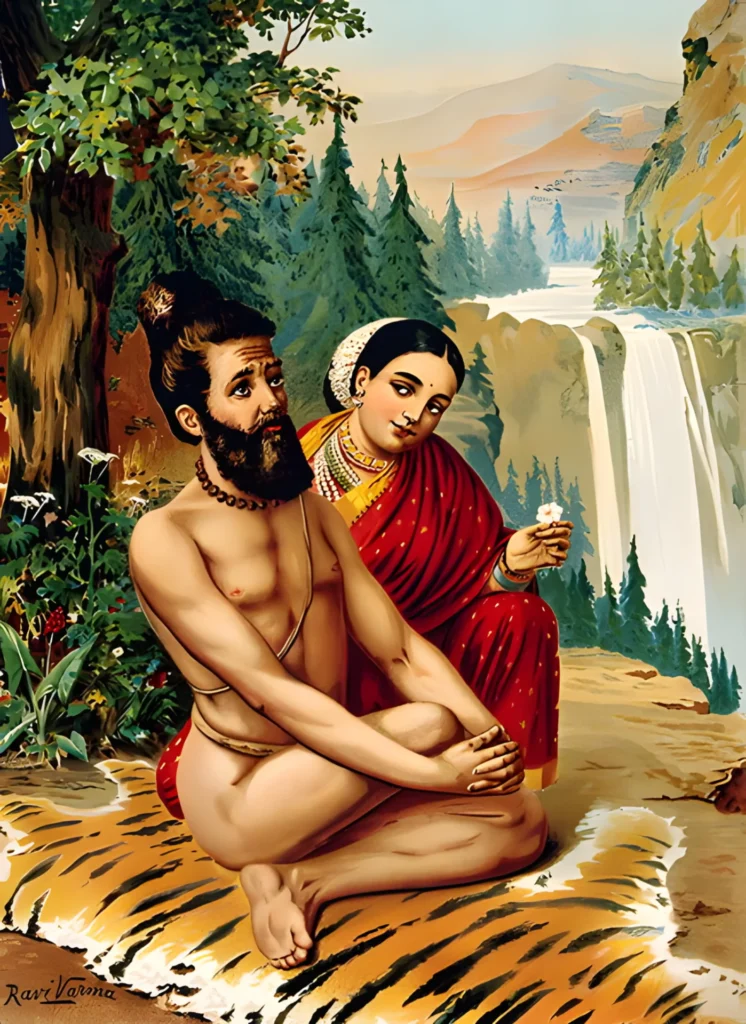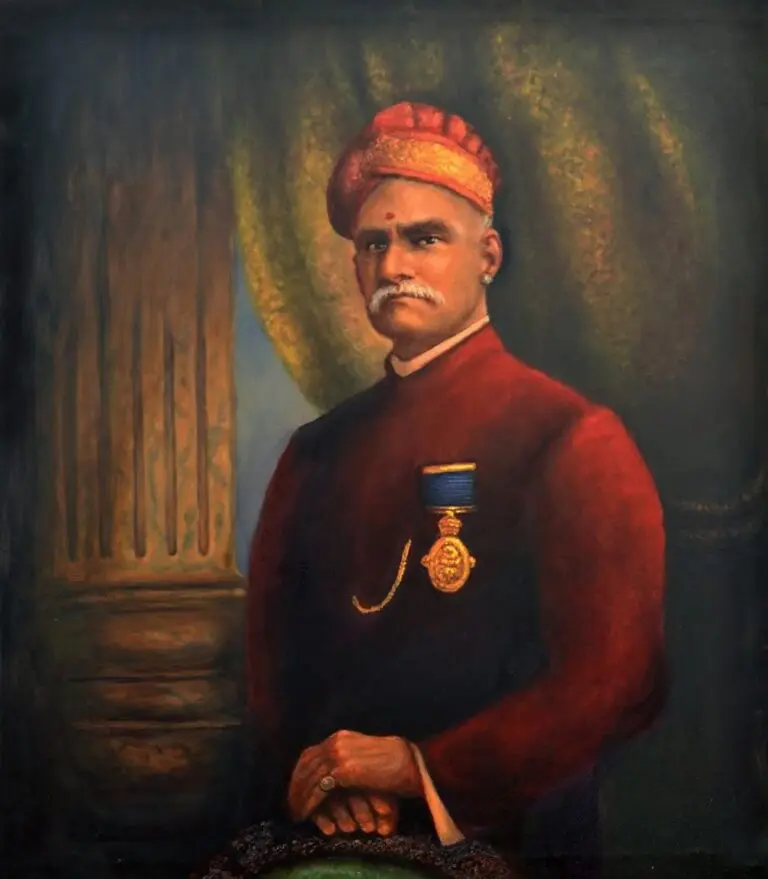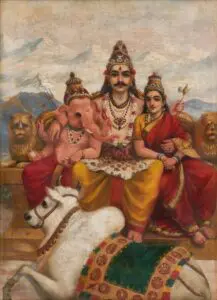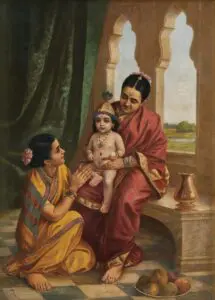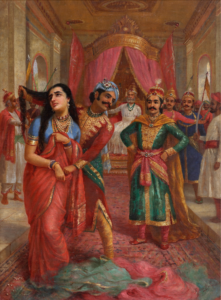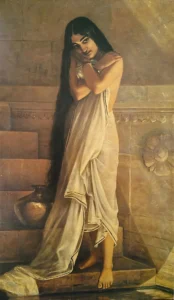Menaka and Vishwamitra
Menaka and Vishwamitra captures the story of divine beauty and mortal desire through the figures of Menaka, the celestial nymph, and Vishwamitra, the sage. In this painting, Ravi Varma illustrates the moment of attraction, with Menaka's allure and Vishwamitra’s inner turmoil vividly depicted. The contrast between her gentle, inviting gaze and his intense, conflicted demeanor brings to life the themes of temptation and sacrifice, making this piece unforgettable.
Late 19th Century
About the Artwork
Raja Ravi Varma's painting Menaka Tempting Vishwamitra is a celebrated work that captures a pivotal moment from Indian mythology. The artwork depicts Menaka, an Apsara (celestial nymph), sent by Indra to seduce the sage Vishwamitra, who was deeply engrossed in his penance to attain the status of Brahmarishi. This narrative highlights themes of temptation and the struggle between spiritual pursuits and earthly desires.
Despite initially being sent to disrupt Vishwamitra, Menaka was said to have genuinely fallen in love with him. This complex emotional turn made her mission more complicated, as she faced the painful consequences of her own actions and Vishwamitra’s wrath when he discovered the truth.
This story unfolds as a poignant tale of desire, sacrifice, and consequence. Vishwamitra’s attraction to Menaka leads him to abandon his penance, resulting in his fall from spiritual grace. The painting masterfully conveys both Menaka’s seductive allure and the sorrow that follows their union, highlighting the tragic consequences of divine intervention in human affairs. Through Menaka and Vishwamitra, Varma examines complex themes of love, duty, and the fragile nature of human resolve, making it a piece rich in emotion and narrative depth.
What happened later?
Vishwamitra fell deeply in love with Menaka and abandoned his penance, living with her for several years. However, when he eventually realized her purpose, he was devastated and felt betrayed, leading him to abandon her and their child, Shakuntala, who would later become an important figure in Indian mythology.Despite initially being sent to disrupt Vishwamitra, Menaka was said to have genuinely fallen in love with him. This complex emotional turn made her mission more complicated, as she faced the painful consequences of her own actions and Vishwamitra’s wrath when he discovered the truth.
Did You Know
Vishwamitra was originally a powerful king and not a sage. His transformation into a sage came after a deep desire to gain spiritual prowess, but Menaka’s entry into his life was an attempt to disrupt his asceticism and intense meditation at the behest of Lord Indra.
Menaka, an apsara from Indra’s court, was sent specifically to distract Vishwamitra because Indra feared the power the sage would gain through his meditation. Menaka’s mission was to seduce him and break his penance, which she accomplished using both her beauty and the charm of divine music and nature’s allure.
Menaka and Vishwamitra’s union gave rise to Shakuntala, one of the most prominent characters in Indian mythology. Shakuntala was later married to King Dushyanta and became the mother of Bharata, after whom India is named as “Bharat.” This lineage and its influence underscore how even a seemingly deceptive mission led to a major legacy.




